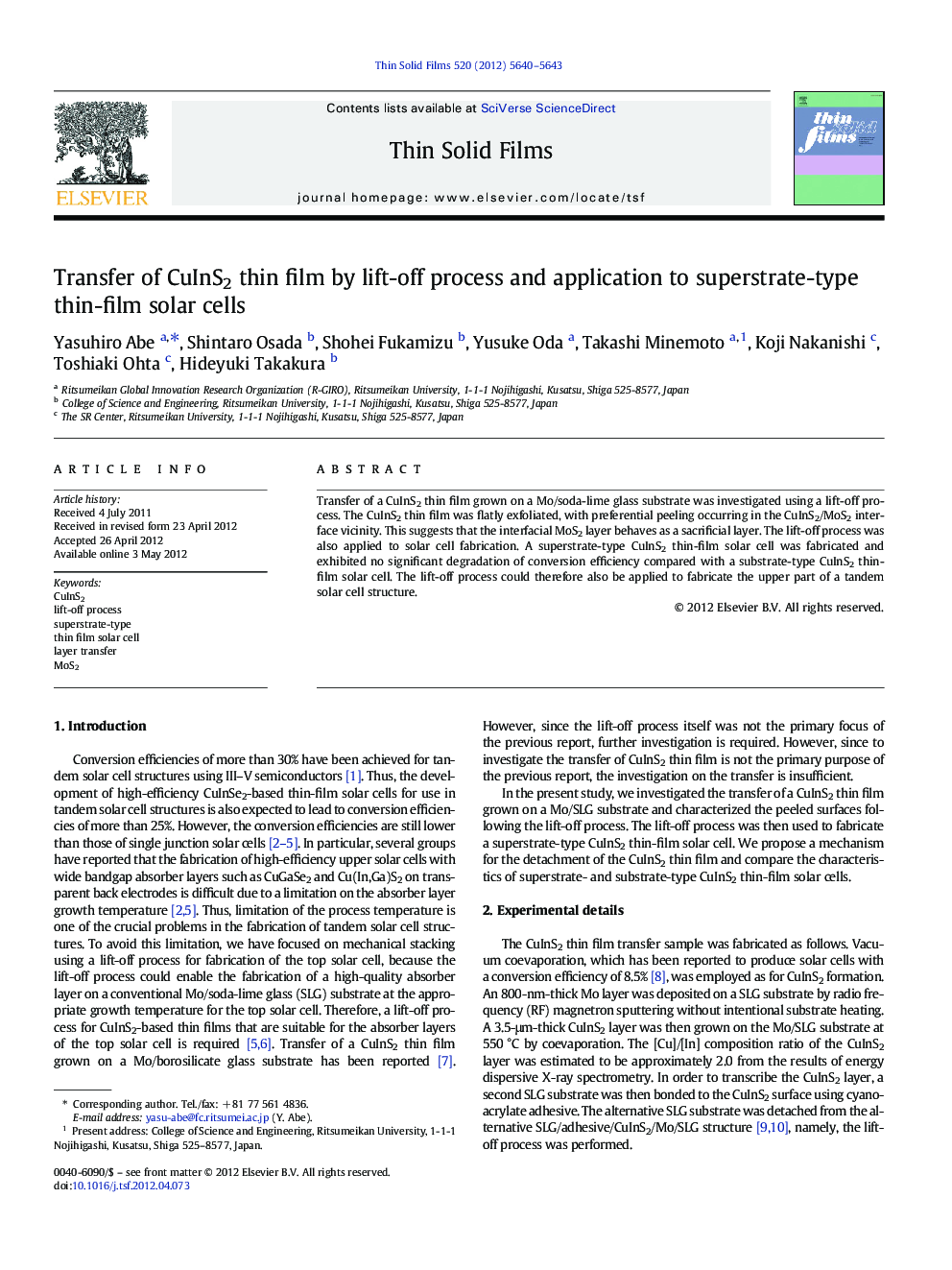| Article ID | Journal | Published Year | Pages | File Type |
|---|---|---|---|---|
| 1667419 | Thin Solid Films | 2012 | 4 Pages |
Transfer of a CuInS2 thin film grown on a Mo/soda-lime glass substrate was investigated using a lift-off process. The CuInS2 thin film was flatly exfoliated, with preferential peeling occurring in the CuInS2/MoS2 interface vicinity. This suggests that the interfacial MoS2 layer behaves as a sacrificial layer. The lift-off process was also applied to solar cell fabrication. A superstrate-type CuInS2 thin-film solar cell was fabricated and exhibited no significant degradation of conversion efficiency compared with a substrate-type CuInS2 thin-film solar cell. The lift-off process could therefore also be applied to fabricate the upper part of a tandem solar cell structure.
► A lift-off process is applied to transfer of a CuInS2 thin film. ► A CuInS2 thin film is transcribed into an alternative substrate. ► Our result suggests that an interfacial MoS2 layer acts as a sacrificial layer. ► A lift-off process is applied to fabricating a superstrate-type solar cell. ► A lift-off process is attractive for producing tandem structure solar cells.
